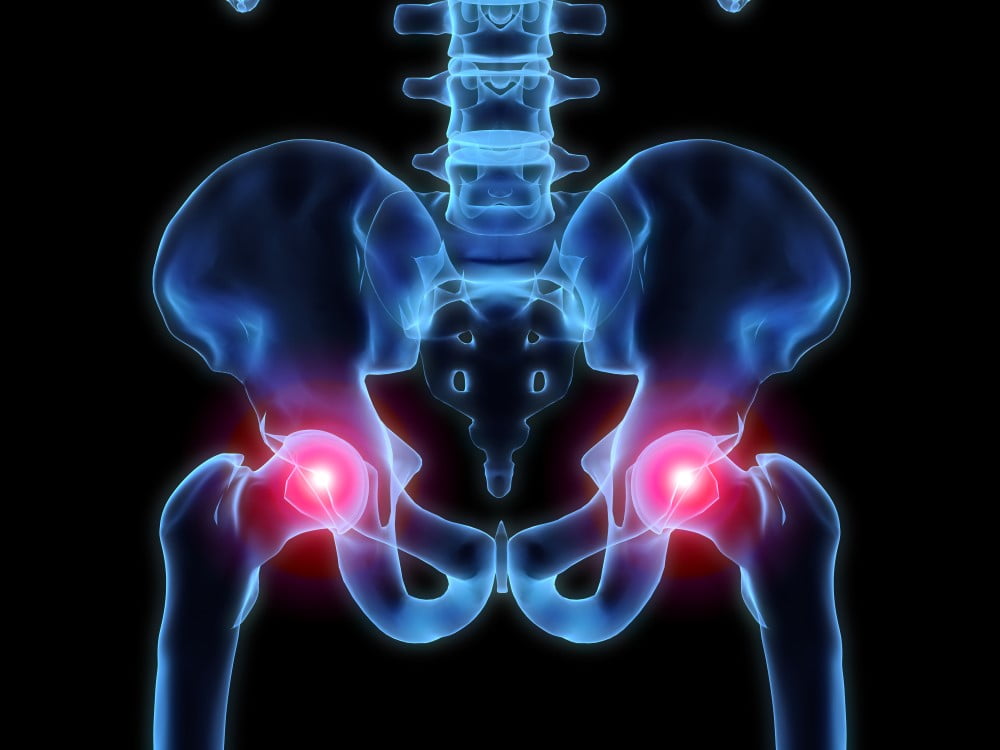Celiac hip pain is a lesser-known aspect of celiac disease, a chronic autoimmune disorder triggered by gluten consumption. While celiac disease primarily affects the small intestine, it can also lead to various extraintestinal symptoms, including joint pain, specifically in the hips. Understanding the connection between celiac disease and hip pain is crucial for effective management and improved quality of life.
Contents
Understanding Celiac Disease
Celiac disease is an autoimmune disorder that affects the small intestine and is triggered by the consumption of gluten, a protein found in wheat, barley, and rye. When individuals with celiac disease consume gluten, their immune system responds by attacking the lining of the small intestine, causing inflammation and damage to the intestinal villi. These villi are small, finger-like projections that help absorb nutrients from food.
The exact cause of celiac disease is not fully understood, but it is believed to involve a combination of genetic predisposition and environmental factors. Certain genes, especially HLA-DQ2 and HLA-DQ8, are strongly associated with an increased risk of developing the condition. However, not everyone with these genes will develop celiac disease.
Identifying Celiac Hip Pain Symptoms

. Let’s discuss joint pain symptoms that someone with celiac disease might experience:
- Hip Pain: Pain or discomfort in the hip joint, which is where the thigh bone (femur) meets the pelvis.
- Joint Inflammation: The hip joint may become inflamed, leading to redness, swelling, and warmth around the area.
- Stiffness: Difficulty moving the hip joint, especially after periods of inactivity or in the morning.
- Limited Range of Motion: Reduced ability to move the hip freely, which can affect walking and other activities.
- Radiating Pain: Hip pain may radiate to the groin, buttocks, or down the leg.
- Worsening Pain with Activity: Hip pain may worsen with movement, weight-bearing activities, or prolonged sitting/standing.
- Systemic Symptoms: In some cases, joint pain may be accompanied by other symptoms of celiac disease, such as digestive issues, fatigue, or skin rashes.
The Link Between Gluten and Hip Pain
Here are some possible explanations:
- Nutritional Deficiencies: Celiac disease and gluten sensitivity can lead to malabsorption of essential nutrients like vitamin D and calcium. These nutrients play a crucial role in bone health, and deficiencies can lead to weakened bones, joint pain, and an increased risk of musculoskeletal issues.
- Inflammation: In susceptible individuals, gluten consumption may trigger an inflammatory response in the body, affecting various tissues, including joints. Chronic inflammation can contribute to joint pain and discomfort.
- Autoimmune Reactions: Celiac disease is an autoimmune disorder, and gluten consumption can trigger an immune response that may inadvertently attack healthy tissues, including joints, leading to pain and inflammation.
- Association with Other Conditions: Some individuals with celiac disease or gluten sensitivity may also have other autoimmune or inflammatory conditions that can cause joint pain, such as rheumatoid arthritis or reactive arthritis.
It’s essential to note that these explanations are theoretical, and scientific research on the link between gluten and joint pain, particularly hip pain, is still ongoing.
Managing Celiac Hip Pain Through Diet

By eliminating gluten from your diet, you can reduce inflammation, promote healing of the small intestine, and potentially alleviate joint pain and other related symptoms.
Here are some dietary guidelines to manage celiac hip pain:
- Avoid Gluten-Containing Foods: Stay away from all foods and products that contain wheat, barley, rye, and their derivatives. This includes bread, pasta, cereals, baked goods, and many processed foods that use gluten as an ingredient or additive.
- Choose Gluten-Free Grains: Instead of gluten-containing grains, opt for gluten-free alternatives like rice, corn, quinoa, millet, oats (labeled gluten-free), and others. Make sure to verify that oats are certified gluten-free, as cross-contamination can occur during processing.
- Read Labels Carefully: Always read food labels to check for hidden sources of gluten in packaged products. Gluten can sometimes be found in unexpected places, such as sauces, dressings, soups, and even certain medications.
- Cook with Fresh Ingredients: Cooking with fresh, whole foods is an excellent way to ensure your meals are gluten-free and nutritious. Focus on fruits, vegetables, lean proteins, and naturally gluten-free grains.
- Beware of Cross-Contamination: To avoid cross-contamination, use separate cooking utensils, cutting boards, and toaster for gluten-free foods. Be cautious when eating out, and choose restaurants with gluten-free options or that understand the importance of preventing cross-contamination.
- Consider Nutritional Supplements: If you have nutrient deficiencies due to malabsorption, your healthcare provider may recommend supplements, especially for vitamins D and B12, iron, and calcium.
- Stay Hydrated: Drinking plenty of water can help maintain joint health and reduce inflammation.
- Monitor Your Symptoms: Keep track of your diet and symptoms to identify any potential triggers or patterns.
Remember, it’s crucial to work closely with a healthcare professional and a registered dietitian who specializes in celiac disease or gluten sensitivity to ensure you are managing your condition appropriately.
Exercise and Physical Therapy

However, some potential indirect connections might explain why individuals with gluten sensitivity or celiac disease may experience joint pain, including hip pain. Here are some possible explanations:
- Nutritional Deficiencies: Celiac disease and gluten sensitivity can lead to malabsorption of essential nutrients like vitamin D and calcium. These nutrients play a crucial role in bone health, and deficiencies can lead to weakened bones, joint pain, and an increased risk of musculoskeletal issues.
- Inflammation: In susceptible individuals, gluten consumption may trigger an inflammatory response in the body, affecting various tissues, including joints. Chronic inflammation can contribute to joint pain and discomfort.
- Autoimmune Reactions: Celiac disease is an autoimmune disorder, and gluten consumption can trigger an immune response that may inadvertently attack healthy tissues, including joints, leading to pain and inflammation.
- Association with Other Conditions: Some individuals with celiac disease or gluten sensitivity may also have other autoimmune or inflammatory conditions that can cause joint pain, such as rheumatoid arthritis or reactive arthritis.
Medications and Supplements
It’s essential to consult with a healthcare professional before starting any new medications or supplements, as they can interact with other medications or have potential side effects.
- Pain Relievers: Over-the-counter pain relievers like acetaminophen or nonsteroidal anti-inflammatory drugs (NSAIDs) can help manage mild to moderate hip pain. However, long-term use of NSAIDs should be monitored, as they may have adverse effects on the digestive system, especially in individuals with celiac disease.
- Glucosamine and Chondroitin: Some people with joint pain, including hip pain, use glucosamine and chondroitin supplements to support joint health. While the evidence of their effectiveness is mixed, some individuals find them helpful. Again, consult with your healthcare provider before starting these supplements.
- Vitamin and Mineral Supplements: If you have nutrient deficiencies due to celiac disease, your healthcare provider may recommend specific vitamin and mineral supplements. Common supplements for celiac disease may include vitamin D, vitamin B12, iron, calcium, and others.
- Omega-3 Fatty Acids: Omega-3 fatty acids have anti-inflammatory properties and may help reduce inflammation and joint pain. They can be obtained through dietary sources like fatty fish or taken as supplements.
Alternative and Complementary Therapies
Here are some alternative and complementary therapies that individuals with celiac hip pain may explore:
- Acupuncture: Acupuncture involves the insertion of thin needles into specific points on the body to stimulate energy flow and promote healing. Some people find acupuncture helpful for managing pain and improving overall well-being.
- Chiropractic Care: Chiropractic adjustments aim to realign the spine and musculoskeletal system to alleviate pain and improve joint function. Chiropractors may also provide exercises and lifestyle advice to support overall health.
- Massage Therapy: Massage can help reduce muscle tension, improve circulation, and promote relaxation, which may be beneficial for individuals with hip pain.
- Mind-Body Techniques: Mind-body practices such as meditation, guided imagery, and relaxation techniques can help manage stress, which may indirectly impact pain perception.
- Herbal Remedies: Some herbal supplements, such as turmeric or devil’s claw, are believed to have anti-inflammatory properties that may help with joint pain. However, their effectiveness and safety may vary, so it’s essential to discuss these with a healthcare professional.
Celiac Hip Pain in Children
If a child with celiac disease experiences hip pain, it is essential to investigate the underlying cause and provide appropriate management.
Possible reasons for celiac hip pain in children:
- Nutritional Deficiencies: Children with celiac disease may experience malabsorption of essential nutrients, including vitamin D and calcium, leading to weakened bones and joint pain.
- Osteoporosis: Severe and prolonged malabsorption of nutrients can result in osteoporosis, a condition characterized by weakened bones, which can contribute to hip pain.
- Arthritis: Some children with celiac disease may develop associated conditions like arthritis, which can cause joint pain, including in the hips.
- Autoimmune Reactions: Celiac disease is an autoimmune disorder, and immune system activation can lead to inflammation in various body tissues, including the joints.
- Gluten Sensitivity: Children who are sensitive to gluten but may not have full-blown celiac disease can also experience joint pain as a symptom.
If a child with celiac disease complains of hip pain or exhibits signs of joint discomfort, it is crucial to seek medical attention. The child’s pediatrician or a pediatric gastroenterologist can evaluate the symptoms, perform appropriate tests, and determine the underlying cause of the pain.
Conclusion
Celiac hip pain is a significant aspect of celiac disease that deserves attention and understanding. By recognizing the link between gluten consumption and hip pain, adopting a gluten-free diet, engaging in appropriate exercises, and exploring various therapies, individuals can find relief and enhance their quality of life.
If you’re experiencing Hip pain, physical therapy for hip pain at PhysioMantra can help: Book an online physical therapy session.



